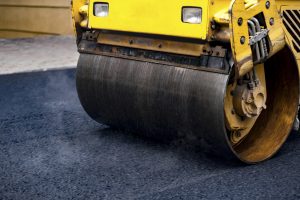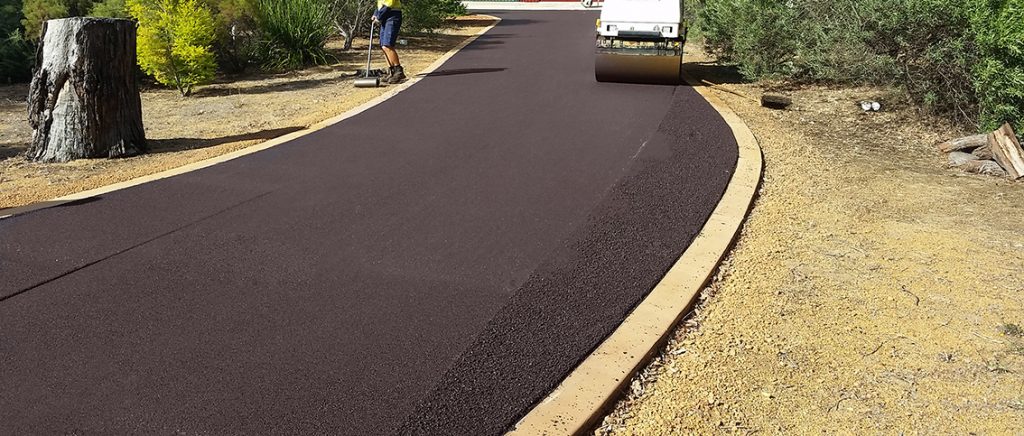Elevate the Look and Feel of Your Residential Or Commercial Property with Expert Commercial Parking Lot Paving
Elevate the Look and Feel of Your Residential Or Commercial Property with Expert Commercial Parking Lot Paving
Blog Article
Unlocking the Secrets of Hot Mix Asphalt Innovation
Checking out the midsts of warm mix asphalt innovation reveals a globe where meticulous procedures and accurate solutions converge to shape our roadways and infrastructure. The blend of aggregates, binders, and fillers isn't just a building task however a tactical orchestration of sturdiness and effectiveness. As we peer into the intricate dancing of parts, a tapestry of durability and sustainability unfolds. What exists under this surface of asphaltic mastery, and what keys wait to be revealed in the realm of leading advancements?
Importance of Hot Mix Asphalt
Warm Mix Asphalt plays a critical role in modern-day infrastructure growth due to its longevity and cost-effectiveness. As the most generally used leading product for roads, freeways, and car parking whole lots, Hot Mix Asphalt supplies a variety of advantages that add to its significance in building and construction projects. One vital advantage is its capacity to endure rush hour tons and rough climate condition, providing a dependable and resilient surface area for transportation networks. Furthermore, Warm Mix Asphalt is economical in both first construction and long-lasting upkeep, making it a recommended selection for many infrastructure jobs.
The durability of Warm Mix Asphalt stems from its structure, which includes accumulations, binder, and filler materials that are meticulously chosen and mixed to fulfill particular efficiency demands. Overall, the relevance of Hot Mix Asphalt in framework advancement can not be understated, as it proceeds to be a cornerstone of contemporary construction methods.
Components of Asphalt Mixes
The make-up of asphalt mixes includes carefully chosen aggregates, binder, and filler materials that are essential for attaining particular efficiency requirements. Aggregates are the key component of asphalt blends, providing stamina and security. These aggregates can be natural, such as crushed rock or crushed stone, or artificial, like recycled products from old pavements. The binder, normally bitumen or asphalt cement, holds the accumulations with each other and offers adaptability and durability to the mix. The choice of the binder is critical as it directly influences the mix's efficiency in various weather. Fillers, such as hydrated lime or Rose city concrete, are used to improve the mix's workability and aging resistance. Angled Parking.
The mix and percentage of these parts play a substantial role in determining the quality and performance of the asphalt mix. Engineers carefully design the mix to meet specific requirements, considering factors like traffic volume, environment problems, and sidewalk life expectancy. Appropriate choice and balancing of aggregates, binder, and fillers are essential for creating sturdy, durable asphalt sidewalks.
Combining and Production Techniques

When the aggregates are chosen, the binder, commonly asphalt concrete, is included in bind the products with each other. The binder's high quality and amount dramatically influence the mix's versatility, resistance, and stamina to ecological variables. In addition, fillers like moisturized lime or Portland cement might be included to improve certain qualities of the asphalt mix, such as its workability or moisture resistance.
During manufacturing, the accumulations and binder are heated, generally between 250-325 ° F(121-163 ° C ), to promote blending and guarantee proper coating of the accumulations. The mixing process has to be complete to accomplish a homogeneous combination that advertises the desired efficiency attributes of the asphalt. Various strategies, such as batch mixing or drum blending, are employed to attain constant and top quality asphalt mixes for building and construction jobs.
Factors Influencing Asphalt Performance
Variables influencing asphalt performance incorporate an array of variables that impact the durability, long life, and overall quality of asphalt pavements. One vital factor is the quality of materials made use of in the asphalt mix.

Layout factors to consider, such as pavement thickness and drainage, are crucial in ensuring important link the long-term performance of the asphalt pavement. By thoroughly thinking about these factors, contractors and engineers can optimize asphalt performance and enhance the solution life of sidewalks.
Lasting Practices in Asphalt Innovation

WMA allows for the manufacturing and placement of asphalt mixes at reduced temperatures contrasted to traditional hot-mix asphalt, resulting in decreased power consumption and greenhouse gas discharges. The usage of porous asphalt mixes can aid mitigate stormwater overflow concerns by allowing water to infiltrate via the sidewalk and into the ground, promoting all-natural water purification and recharge processes.
Verdict
To conclude, warm mix asphalt innovation plays a vital function in modern-day facilities advancement as a result of its resilience and cost-effectiveness. By very carefully balancing elements, utilizing appropriate blending methods, and thinking about different aspects, engineers can produce premium asphalt mixes that stand up to rush hour loads and severe climate condition. Embracing lasting techniques, such as utilizing recycled products and warm-mix innovations, further boosts the ecological friendliness of asphalt technology.
Blending and manufacturing techniques in hot mix asphalt modern technology include the accurate combination and handling of aggregates, binder, and fillers to create a high-performance and long lasting asphalt mix.Aspects influencing asphalt efficiency include a range of variables that influence the toughness, longevity, and total high quality of asphalt pavements. Lasting methods in asphalt modern technology include various campaigns aimed at reducing the ecological impact of asphalt manufacturing and paving processes. By including recovered asphalt sidewalk (RAP) and recycled asphalt roof shingles (RAS) right into new asphalt blends, the see it here industry can significantly minimize the consumption of raw products and energy, while likewise lowering garbage dump waste.
WMA permits for the production and positioning of asphalt mixes at reduced temperature levels compared to typical hot-mix asphalt, resulting in decreased power consumption and greenhouse gas discharges.
Report this page